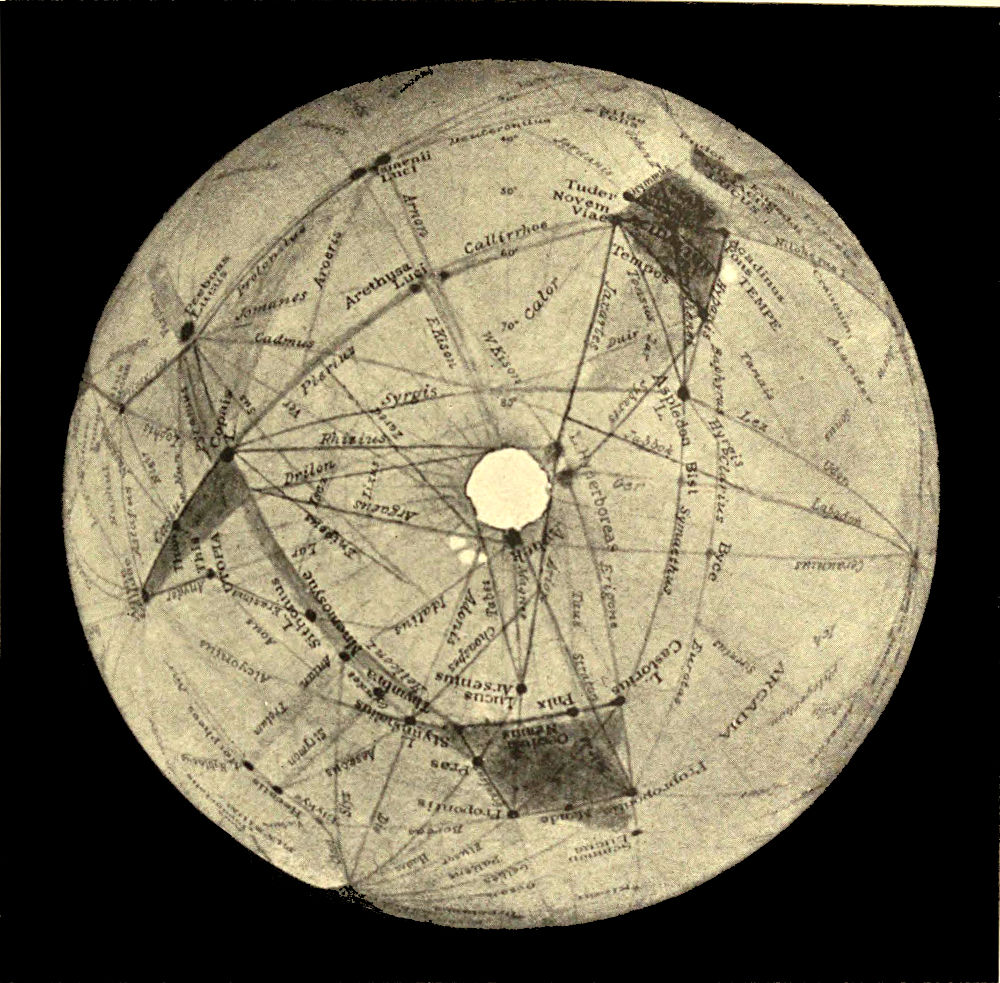The Enigmatic “Spokes” of Venus: Percival Lowell’s Controversial Observations
Percival Lowell, a prominent American astronomer of the late 19th and early 20th centuries, is most famous for his fervent belief in the existence of Martian canals and his influential role in the eventual discovery of Pluto. However, Lowell’s astronomical pursuits extended beyond the red planet. He also made a series of controversial observations of Venus, claiming to have witnessed a network of dark, radiating “spokes” traversing the planet’s otherwise featureless, cloud-shrouded surface.
These observations, published in several scientific papers and popular books, captivated the public imagination while simultaneously sparking intense debate within the astronomical community. While some astronomers supported Lowell’s findings, many others remained skeptical, attributing the “spokes” to optical illusions or observational errors.
This article will delve into the details of Lowell’s Venus observations, examining the evidence he presented, the criticisms leveled against his claims, and the enduring legacy of his work in our understanding of this enigmatic planet.

Lowell’s Observations and Theories
Lowell’s interest in Venus began in the late 1890s, driven by a desire to understand the planet’s enigmatic atmosphere and surface. Using powerful telescopes at his privately funded Lowell Observatory in Flagstaff, Arizona, he meticulously observed Venus during its rare transits across the face of the Sun.
During these transits, Lowell claimed to have witnessed a series of dark, radial lines emanating from a central dark spot on Venus’s surface. These “spokes,” as he termed them, appeared to shift and change over time, suggesting a dynamic and potentially even artificial origin.
Lowell proposed several theories to explain the existence of these enigmatic features. He initially speculated that the spokes might be vast, continent-sized landmasses or even artificial structures built by a hypothetical civilization on Venus.

He later refined his hypothesis, suggesting that the spokes could be vast, interconnected networks of canals, similar to the Martian canals he had previously theorized about. These Venusian canals, he argued, might be used to transport water or other vital resources across the planet’s scorching surface.
The Controversy and Criticism
Lowell’s claims regarding the Venusian spokes were met with immediate skepticism from many within the astronomical community. Critics pointed to the subjective nature of his observations, arguing that the “spokes” might simply be artifacts of atmospheric distortion, telescope imperfections, or even physiological phenomena within Lowell’s own eyes.
Some astronomers argued that the apparent changes in the spokes over time could be attributed to variations in Earth’s atmosphere, which can significantly distort telescopic images of celestial objects. Others suggested that the dark features observed by Lowell might be nothing more than fleeting cloud formations or shadows cast by unseen topographical features on the planet’s surface.
Perhaps the most significant criticism of Lowell’s work stemmed from the inherent difficulty of observing Venus. The planet’s thick, opaque atmosphere makes it extremely challenging to discern surface features. Even with the most advanced telescopes of the time, astronomers were largely limited to observing variations in the planet’s cloud cover.
Furthermore, the intense glare of sunlight reflected off Venus’s clouds can easily overwhelm telescopic observations, making it difficult to distinguish genuine surface features from optical illusions or artifacts of the observation process.
The Legacy of Lowell’s Observations
Despite the controversy surrounding his claims, Percival Lowell’s observations of Venus played a significant role in stimulating scientific interest in this enigmatic planet. His work helped to popularize the idea of a dynamic and potentially even inhabited Venus, capturing the public imagination and inspiring generations of astronomers to study this mysterious world.
While subsequent research has largely dismissed Lowell’s specific claims regarding the Venusian spokes, his work served as a valuable reminder of the limitations of human perception and the importance of rigorous scientific scrutiny in astronomical observations.
The development of more advanced technologies, such as spacecraft and radar imaging, has since revolutionized our understanding of Venus. These technologies have revealed a harsh, inhospitable world dominated by extreme temperatures, crushing atmospheric pressure, and a corrosive sulfuric acid atmosphere.
While no evidence has been found to support Lowell’s claims of vast canal networks or advanced civilizations, the exploration of Venus continues to yield fascinating insights into the diversity of planetary environments within our solar system.
Conclusion
Percival Lowell’s observations of Venus, while ultimately proven to be inaccurate, remain a significant chapter in the history of planetary astronomy. His claims, however controversial, sparked intense debate and stimulated further research into this enigmatic world.
Although his vision of a Venus teeming with life or crisscrossed by intricate canal networks has not been borne out by subsequent observations, Lowell’s work serves as a testament to the power of human curiosity and the enduring quest to understand our place within the cosmos.
His legacy lies not only in his controversial observations but also in his pioneering spirit and his unwavering dedication to exploring the mysteries of the universe.
